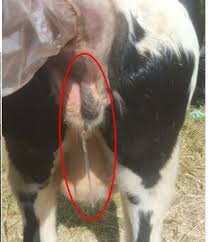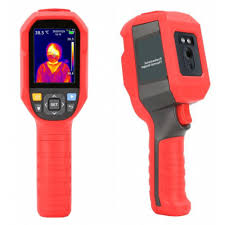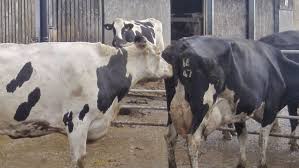Different signs are carefully studied for the detection of heat. Heat detection aids are essential tools for efficient reproductive management when used in combination with an expert eye.
For example, cows marked with a detector (KaMaR) plus chalk on the tail are more efficiently detected than those using a detector alone. Visual observation combined with tail paint is 98% efficient, compared to 91% efficiency with Heat Watch alone.
The secondary signs of heat include:
- Frequent urination.
- Chin resting.
- Back rubbing.
- Walking along fences.
- Loss of appetite.
- Sudden drop in milk production.
Other supportive signs include:
- Licking.
- Sniffing.
- Head lifting.
- Lip curling
- Flehmen’s reaction (upward curling of the lips by a female or male after touching the genitalia of a heat-stressed animal).
Additional indicators are:
- Willingness to mount other cows, even if neither cow stands to be mounted.
- Roughened tailhead or mud on the rump, indicating attempts by other animals to mount.
- Restlessness, which may signal a cow about to exhibit heat (cows in pre-heat may bawl more than usual, head-butt, sniff, or lick other cattle).
- Clear, stringy mucus discharge, which may hang from the vulva or smear on the pin bones or rump of a cow in or about to enter estrus.
- Bloody mucus, often appearing 2-3 days after estrus, which should be recorded to monitor for heat in 17-21 days.
Read Also: Negetive Effects of Starving your Fishes
Physical Signs of Estrus

Physical signs of estrus include:
- Swelling of the vulva.
- Reddening of the vulva (bright cherry pink color).
- Excessive mucus discharge and uterine tone.
- Clustering of animals in heat, forming small groups of three to five animals called sexually active groups (SAGs). Detecting heat is easier when SAGs exist in a herd.
Read Also: How to Control Feeding Struggle among Fishes in the same Pond
Heat Detection Gadgets

- Vaginal pH measurement
- Vaginal smear analysis.
- Measurement of vaginal conductivity using a probe.
- Fern pattern analysis of cervical mucus discharge.
- Endometrial biopsy.
- Cervical mucus glucose content.
- Uterine tone assessment.
- Changes in parlor behavior.
- Milk yield fluctuations.
- Temperature measurement.
- Heat expectancy charts.
- Tail painting.
- Use of androgenized cows.
- Chin ball device.
- Gomer bulls.
- Bio-stimulation.
- Pressure-sensitive KaMaR or Beacon heat detectors.
- Electronic heat mount detectors.
- Heat patches with visible color change.
- Pedometers and activity meters.
- Video cameras and recordings using CCTV.
- Electronic odor detectors.
- Milk progesterone detection.
- Heat detection by measuring 17β-estradiol and P4 in milk.
- Infrared spectroscopy and magnetic resonance spectroscopy.
- Synchronization of estrus.
Do you have any questions, suggestions, or contributions? If so, please feel free to use the comment box below to share your thoughts. We also encourage you to kindly share this information with others who might benefit from it. Since we can’t reach everyone at once, we truly appreciate your help in spreading the word. Thank you so much for your support and for sharing!
Read Also: How Long Does It Take a Hazelnut Tree to Produce Nuts?
Frequently Asked Questions
We will update this section soon.

